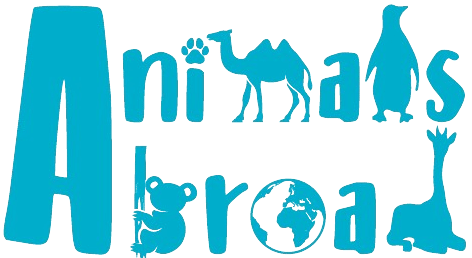Our 51-day adventure across South Africa, Namibia, Botswana, and Zambia was an unforgettable journey that brought us closer as a family and deepened our love for Africa’s wild landscapes. With our two boys in tow, we set off on a self-driving safari, camping under the stars and exploring some of the world’s most iconic national parks.
In Part 2 of our Africa Safari we explored Namibia’s incredible wildlife at Etosha National Park and the Caprivi Stip. Our detailed itinerary will give you ideas for your trip and make it easier for you to experience the magic of Africa firsthand.
For more practical tips on embarking on your first safari, check out our posts: Camping Safari in Africa: Know Before You Go, Navigating Boarder Crossings in Southern Africa, and Safari with Kids: Tips from the Road.
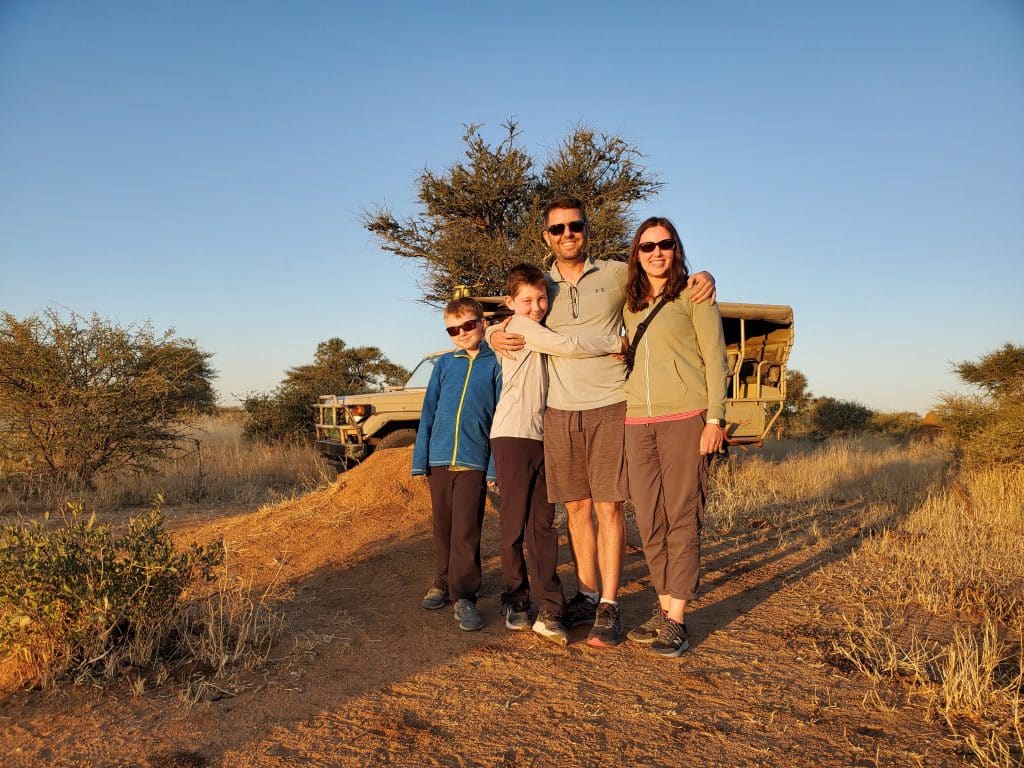
Read about our time along the coasts of Part 1: South Africa & Namibia’s Coast.
Day 17 – 19: Etosha National Park
We were thrilled to arrive at our first big game reserve. The boys dubbed it “Animal Day” and insisted on listening to The Lion King soundtrack as we made our way to our first game drive.
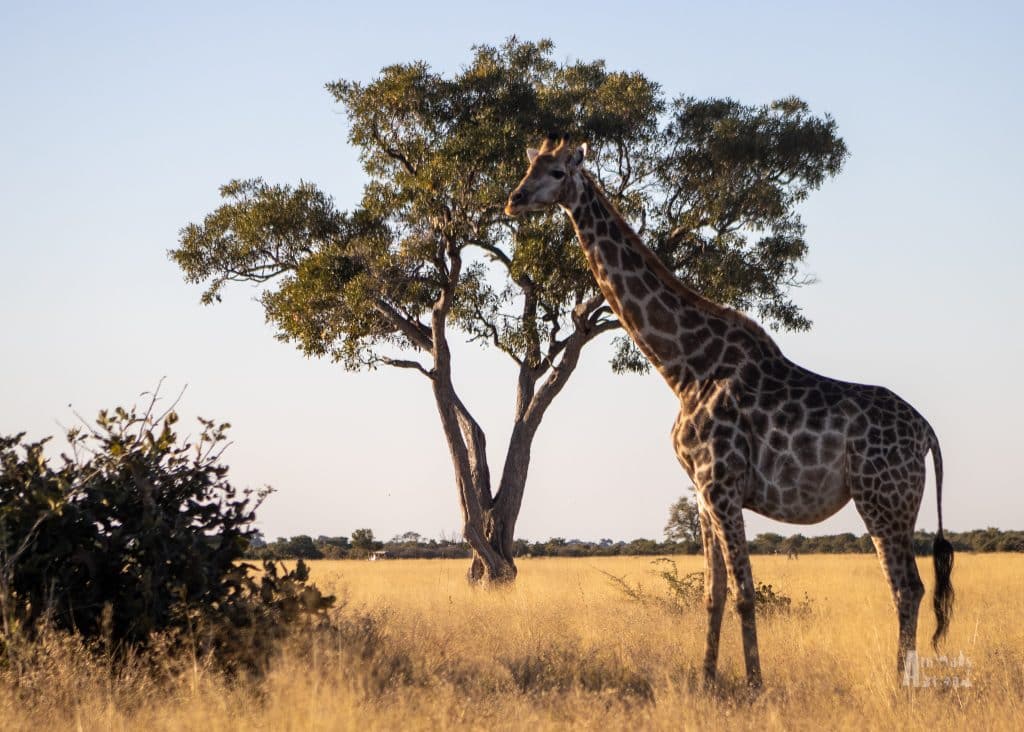
Etosha National Park is one of the best game-viewing parks in Namibia. Covering over 22,000 square kilometres, it’s worth booking at least three nights to explore the different areas. Staying in the campgrounds within the park provides access to lit watering holes, where, during the dry season, animals gather to cool off and drink. Dawn and dusk are prime times for game sightings, and we had some of our best encounters during these hours.
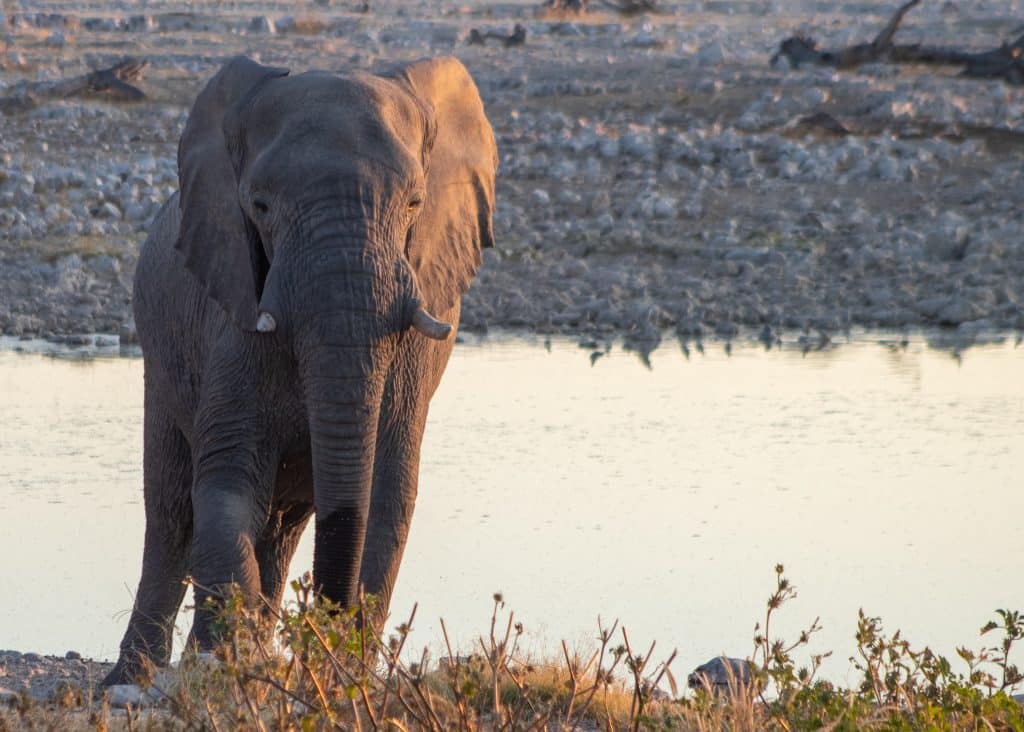
While there, we stayed at Okaukuejo, Halali, and Namutoni campgrounds. Each morning, we’d pack up and slowly drive to the next campsite, scanning the terrain for wildlife along the way. Etosha was the boys’ first safari, and they quickly became incredible animal spotters, often spotting wildlife before Derek and I could. We had close encounters with giraffes, elephants, rhinos, lions, herds of wildebeests and zebras, and various antelope species.
Learn More: Etosha NP with Kids: A Family Safari to Remember
Driving Time: 6 hours (GPS estimated 5 hours) from Ongongo Waterfall campsite to Etosha National Park.
Roads: The first half of the drive was challenging with corrugated gravel roads. However, after reaching Kamanjab, we transitioned to a paved highway with a 120 km/h speed limit. The roads into Etosha and throughout the park were well-maintained and easy to navigate.
Supplies: Groceries and fuel are available in Kamanjab if needed.
Campgrounds: Okaukuejo/Halali/Namutoni (NWR)
The campsites inside Etosha National Park are like other NWR campgrounds: full of amenities but busy and cramped, offering little to no privacy. Shared kitchens and ablution facilities were available. Halali had the best showers with hot water. Power was available on-site. Wi-Fi was available for a fee. For those concerned about wildlife, the campgrounds were fenced.
Okaukuejo’s Waterhole was by far the best for proximity to the animals and sightings. It’s a must-visit if you’re in the area.
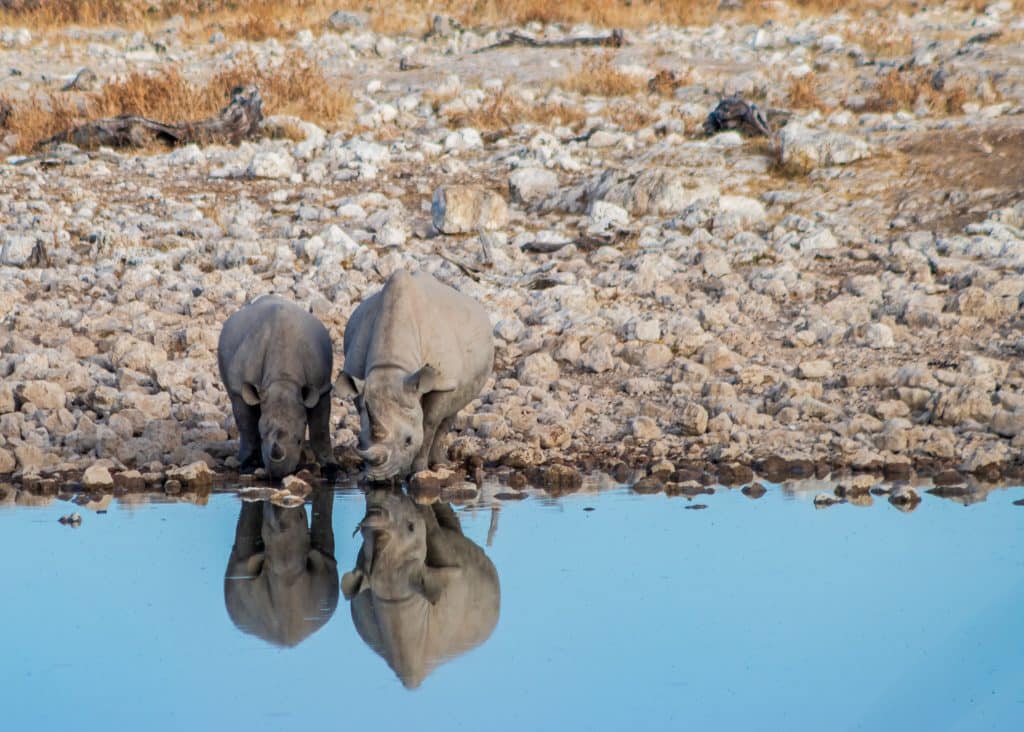
Halali’s Waterhole also offered great viewing opportunities. The seating area was rustic, with large boulders carved into seating and trees supporting a covered patio.
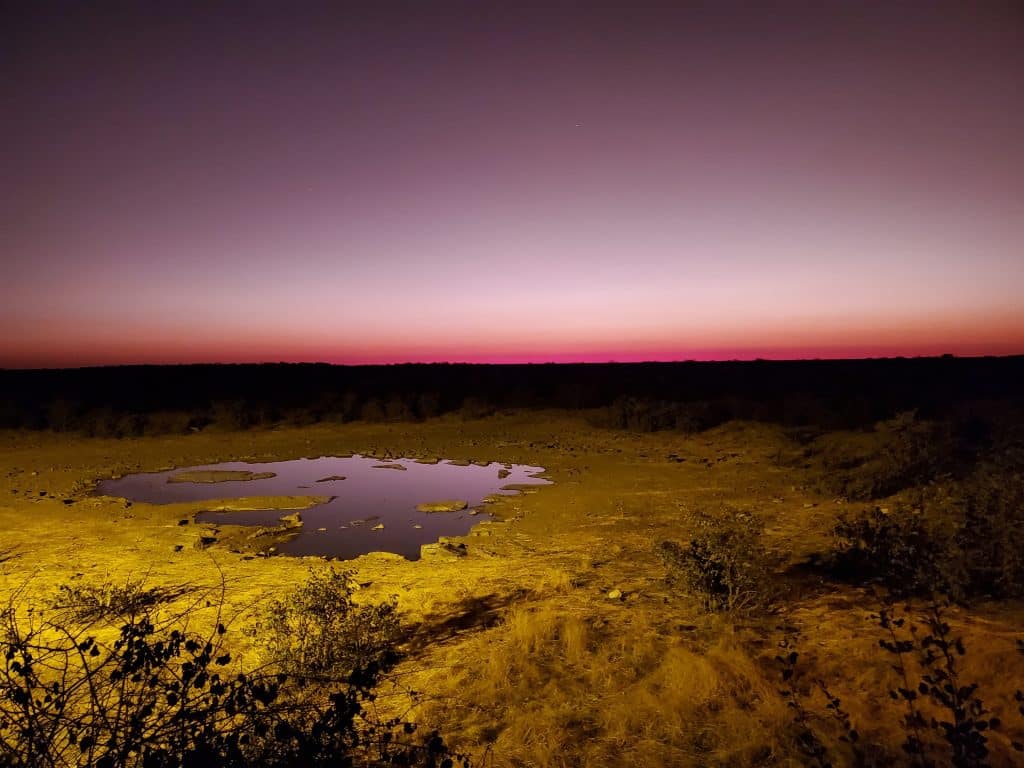
Namutoni’s Waterhole was disappointing. The pond was set so far from the viewing area that it was challenging to identify animals without binoculars.
Day 20 – 22: Okonjima Nature Reserve
Known for its luxury accommodations and incredible wildlife, we were all excited about our stay at Okonjima Nature Reserve. This family-owned conservation property is home to some of Namibia’s most elusive species, such as leopards, pangolins, brown hyenas, and white rhinos.
Learn More: Okonjima Family Safari: Where the Wild Things Wait
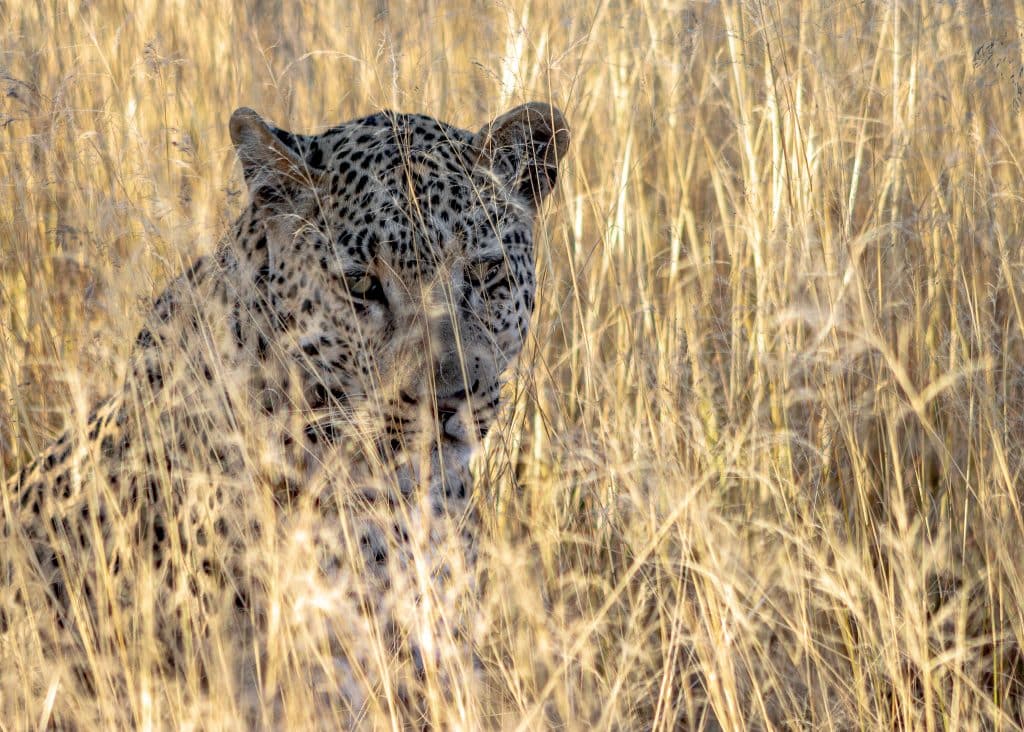
Okonjima is a full-service resort offering package deals unlike other parks we’ve visited. Self-driving is not allowed here; guides must accompany guests on game drives. The reserve offers a range of activities, including hiking, day and night game drives, animal-specific tracking tours (for pangolins, rhinos, and leopards), and a fascinating education center.
Driving Time: 4 hours and 30 minutes from Etosha National Park to the Okonjima Nature Reserve entrance.
Roads: Paved highway until you reach the entrance, then a dirt road (25 km) leading to the reception area. Take your time as you drive through—there are plenty of animals to spot along the way. We had our best rhino sighting on the way in!
Supplies: We stopped en route in Tsumeb, one of the larger cities, for any necessary supplies.
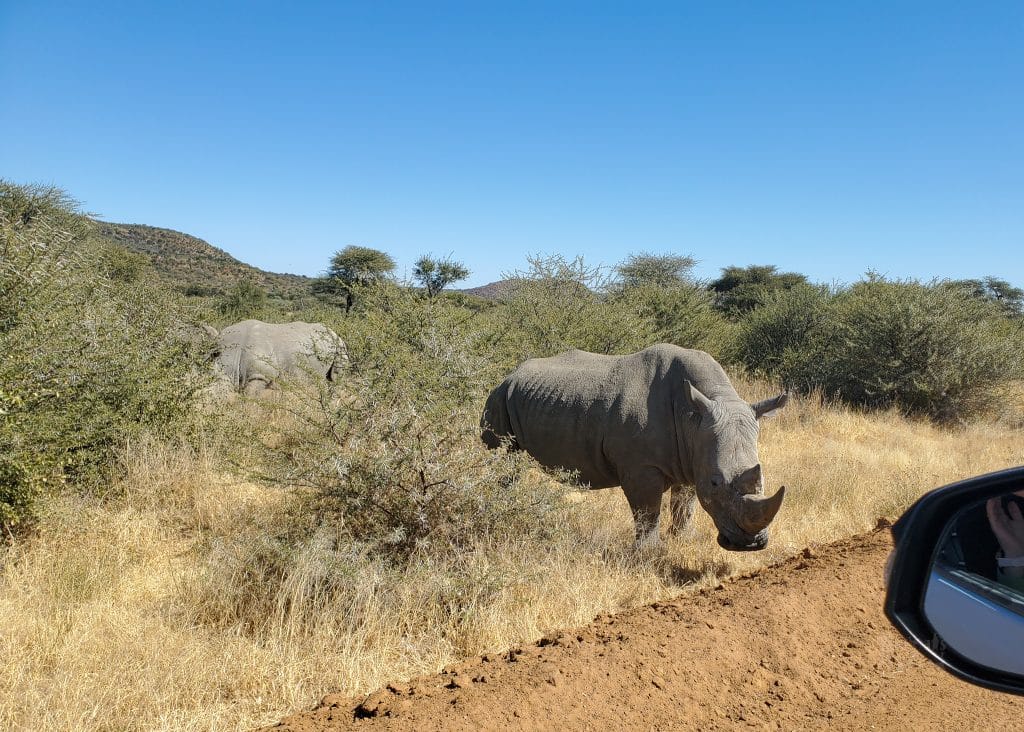
Okonjima Nature Reserve Campsite offered a serene and private experience with just four campsites nestled within the reserve. Each spacious campsite had a large, covered patio, power source, fire pit, complimentary firewood, and private open-air ablution facilities. The campsites were fenced off the main reserve area, but small animals like cape hares and antelopes roam freely. While there is no guarantee that large animals and predators won’t wander through the campsite, the experience is unique and intimate. A communal pool was available for campers within a short walking distance, and Wi-Fi was accessible at the reception.

Day 23: Okonjima to Grootfontein
Ghaub Campground was a quick stop as we made our way east to the Caprivi Strip. We were delighted by the serene campsite on arrival, but little did we know we were in for a long night!
Learn why we later dubbed Ghaub campground the “Baboon Site.”
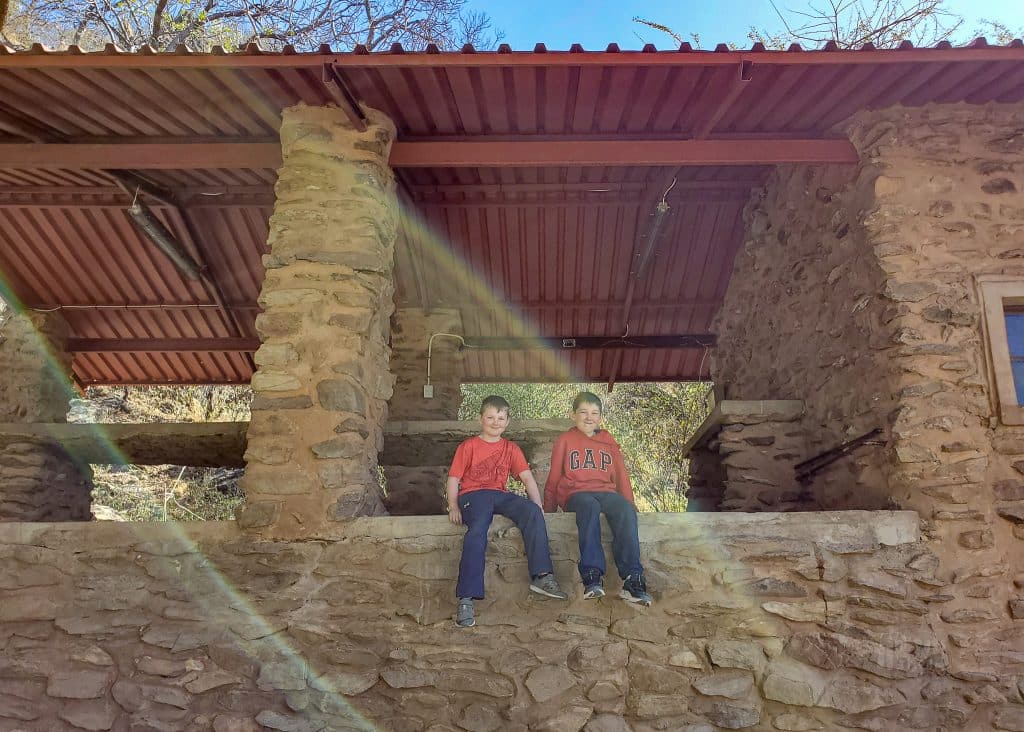
Driving Time: 3 hours.
Roads: Paved highway.
Supplies: Stopped in Otjiwarongo for groceries.
Campground: Ghaub Campground.
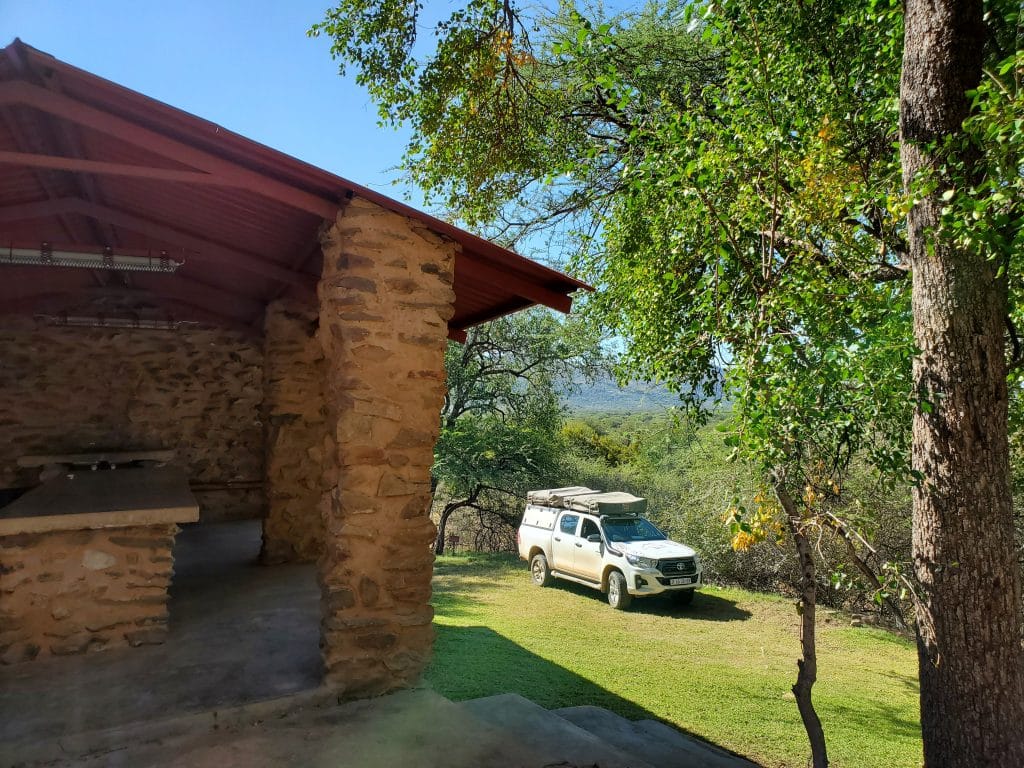
This picturesque campsite overlooked a stunning mountain range and valley. The multi-level site featured a grassy area below, perfect for parking campers or setting up tents, and an upper level with a covered patio, a large cement table seating up to twelve, a fire pit, and an outdoor washing sink. At the back of the building, you’ll find two bathrooms equipped with showers. Hot water came from a fire source. Power was available on-site, and Wi-Fi was accessible at reception, a 5-10 minute walk from the campsite.
Day 24: Grootfontein to Rundu
After the restless night, we were eager to leave early in the morning. It was an easy drive to Rundu, the gateway to the Caprivi Strip. The Kaisosi River Lodge borders Angola and Namibia, separated by the Kavango River and features a large outdoor deck perfect for enjoying the river, with the possibility of spotting hippos.
Note: The Kavango River, as it is known in Namibia, is referred to as the Cubango River in Angola, and the Okavango River in Botswana.
In addition to the scenic views, there were plenty of kid-friendly activities for the boys. The lodge included a restaurant, a games room with a pool table and foosball, and various outdoor amenities like a pool, trampoline, swings, tetherball, and mini golf. The boys had a blast and enjoyed having some freedom to explore.
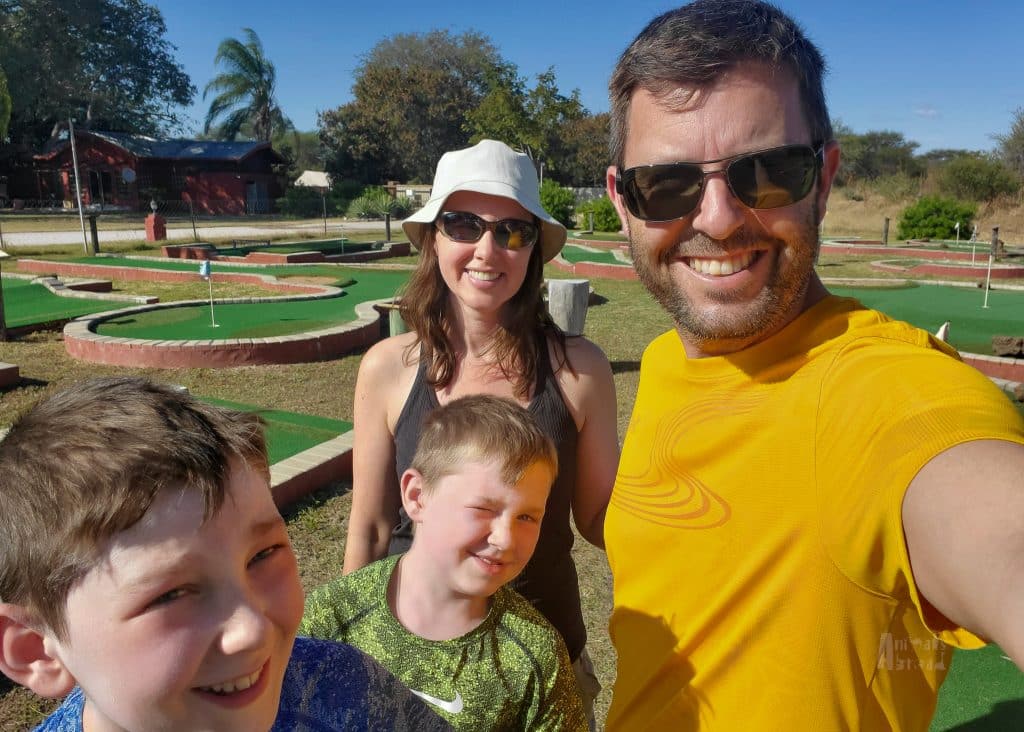
Driving Time: 4 hours
Roads: Paved highway
Campground: Kaisosi River Lodge
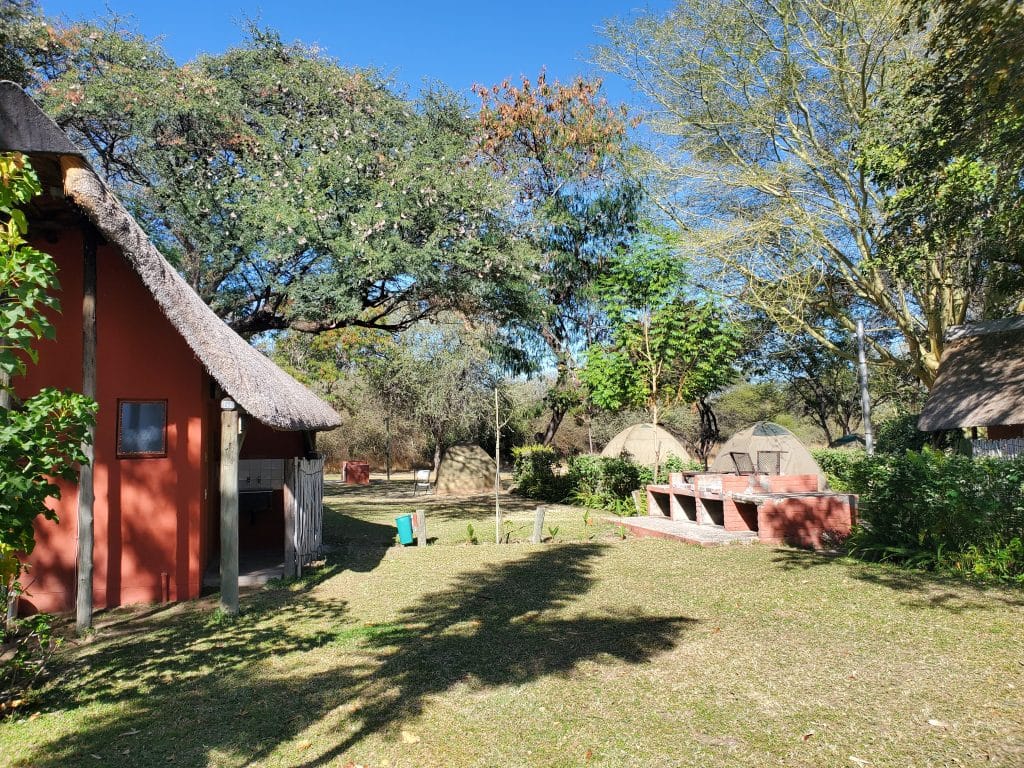
Typically, Kaisosi River Lodge wouldn’t be our favourite campground due to the proximity of campsites and lack of privacy. However, the amenities more than made up for it. The individual campsites had power and lights, a private bathroom with a shower (hot water on demand), an outdoor wash sink, and a fire pit. Wi-Fi was included, and reached the campsite intermittently.
Day 25 & 26: Bwabwata National Park (near Divundu)
Bwabwata National Park, part of Namibia’s Caprivi Strip, is often overlooked in favour of larger parks, but it is well worth a stop if you are in the area. The park is divided into three main sections: Mahango, Buffalo, and Kwando, each offering different landscapes, wildlife sightings, and experiences.
Learn More: Exploring the Caprivi Strips with Kids.
The campground we stayed at, Ndhovu Safari Lodge, was located about 10 minutes away from the Mahango entrance and just across the Kavango River from the Buffalo Core.
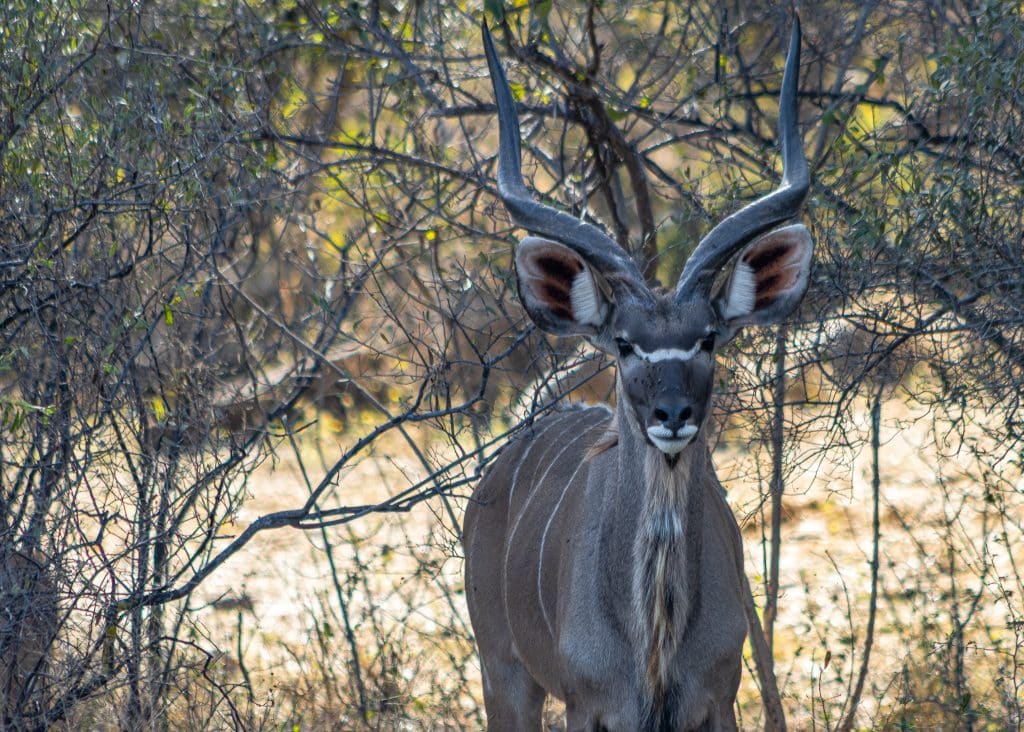
Driving Time: 2 hours and 40 minutes from Rundu to Divundu.
Roads: Paved highway.
Campground: Ndhovu Safari Lodge.
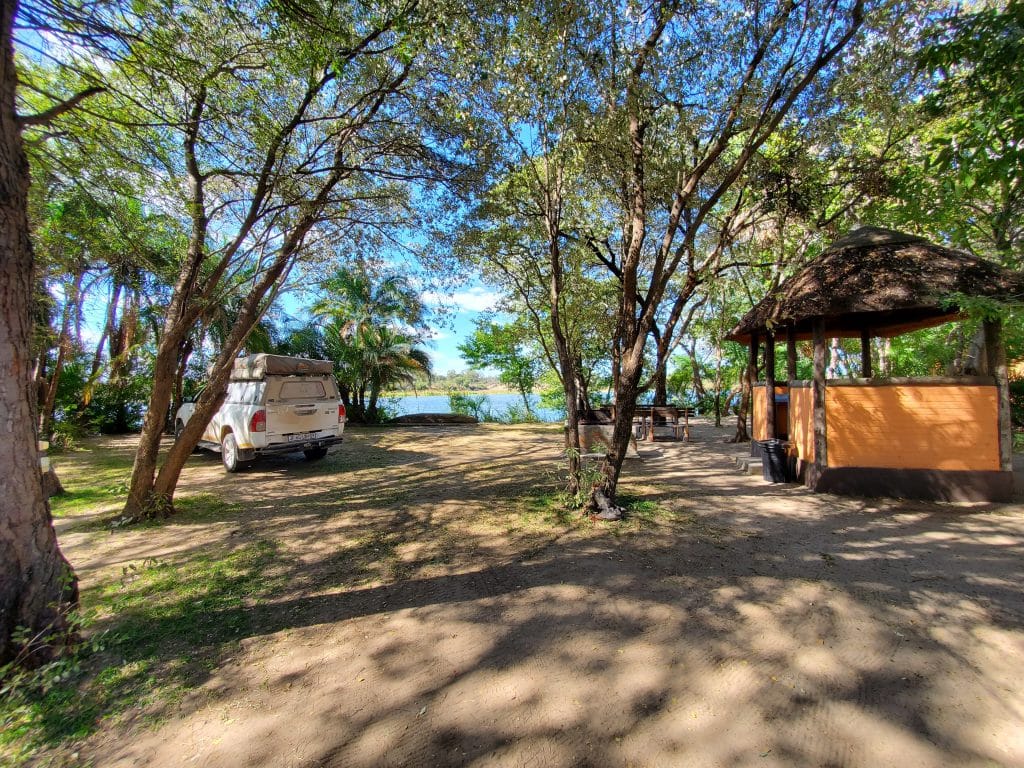
Ndhovu Safari Lodge offered spacious campsites with river views and beautiful leafy trees providing plenty of shade and privacy. Each site included a small fire pit and a covered wash area for dishes. There were two private bathrooms and shower rooms with hot water on demand. Wi-Fi was available at the reception/restaurant area. Laundry service was also available for a fee. For the kids, there was a pool and two adorable dogs to befriend.
Safety Tip: Hippos are known to wander through the campsites from dusk to dawn. Beware when walking at night. They are territorial and can be highly dangerous if they feel threatened. More people are killed by hippos each year than by any other animal in Africa. Never get between a hippo and the water.
Day 27 & 28: Nkasa Rupara National Park
Deeper in the Caprivi Strip, you’ll find Nkasa Rupara National Park. Remote and less visited, this park was some of the wildest terrain we encountered in Namibia. It is home to lions, leopards, elephants, hippos, and cape buffalo. While we spotted several warthogs and a handful of impalas, the highlight of our day was a massive herd of cape buffalo grazing next to the road, giving us an up-close view.
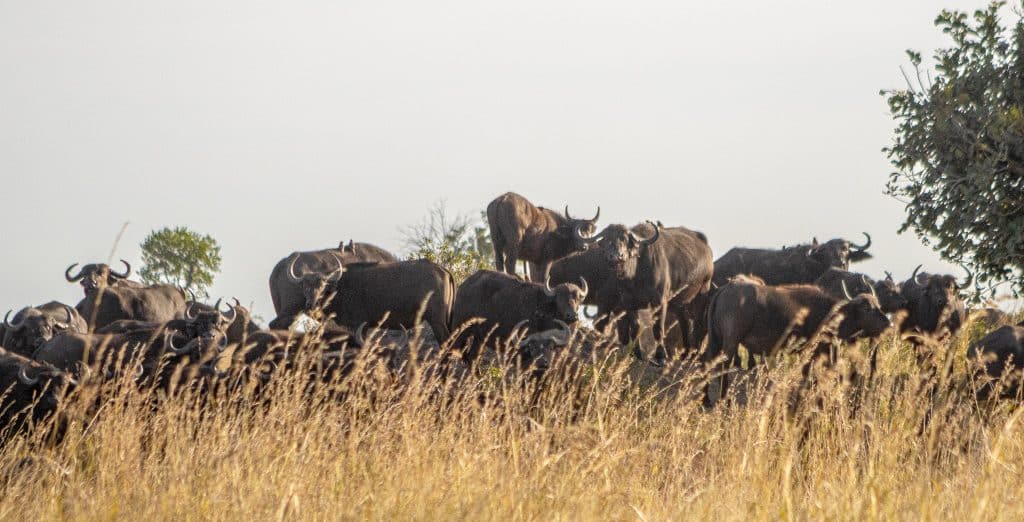
Driving Time: 4 hours from Divundu to Nkasa Rupara National Park
Roads: Paved highway.
Campground: Livingstone’s Camp
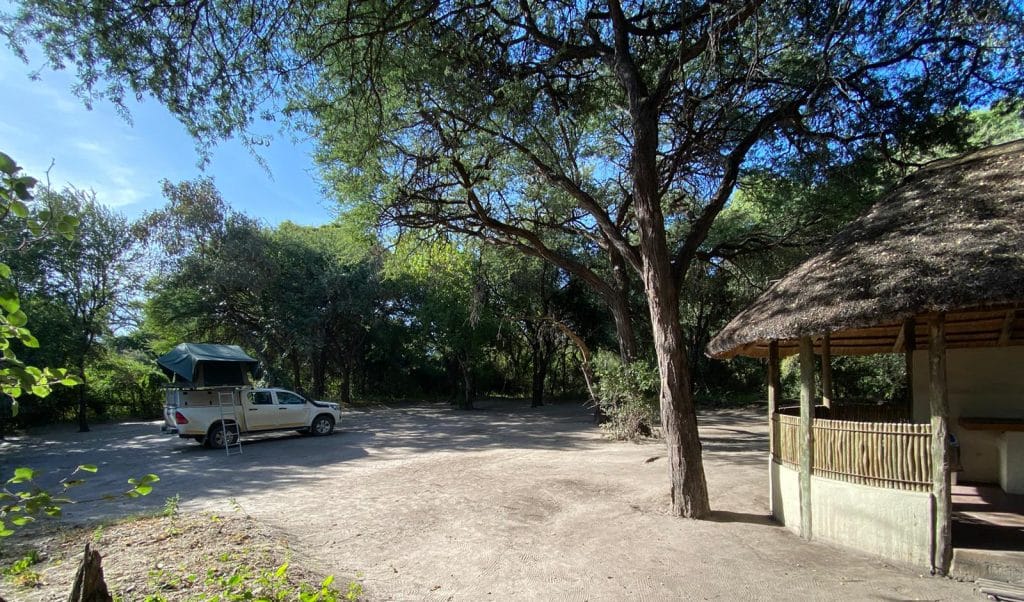
Finding Livingstone Campground was challenging due to poorly marked roads and missing signage, which caused us to backtrack in search of the GPS signal. After a few detours, we arrived at a stunning campsite that opened to a vast grassy plain—perfect for game viewing. Just set up your chairs around the fire pit and wait for the animals to come to you.
This private campsite offered a large, covered patio with a wash sink, outdoor seating, and a bathroom with hot water on demand. Solar panels powered the site, so lights and plugs were available to charge cameras and other electronics. There was no Wi-Fi. The park was unfenced, and animals, including hippos, elephants, and lions, were free to roam in and out of the campsite.
Day 29: Nkasa Rupara National Park to Katima Mulilo
Katima Mulilo is the largest city in the Caprivi Strip and the closest to the Zambian border. As you enter Caprivi Houseboat Safari Lodge, it feels like you’re entering a jungle. Towering trees with dense canopies, thick vines in various shades of green, and large-leafed bushes block out much of the sunlight along the path.
The reception was the perfect place to rest, catch up on some schoolwork, and soak in the beauty of the Zambezi River. From here, we could easily spot crocodiles and hippos lounging near the banks.
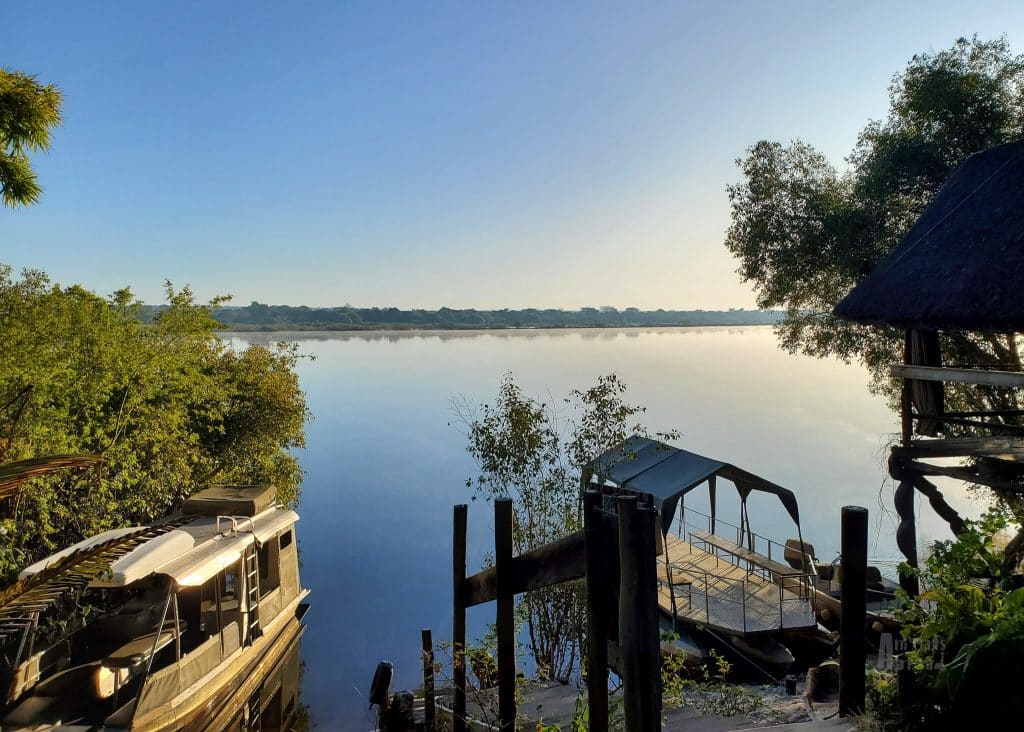
Driving Time: 2 hours
Roads: Paved highway
Campsite: Caprivi Houseboat Safari Lodge
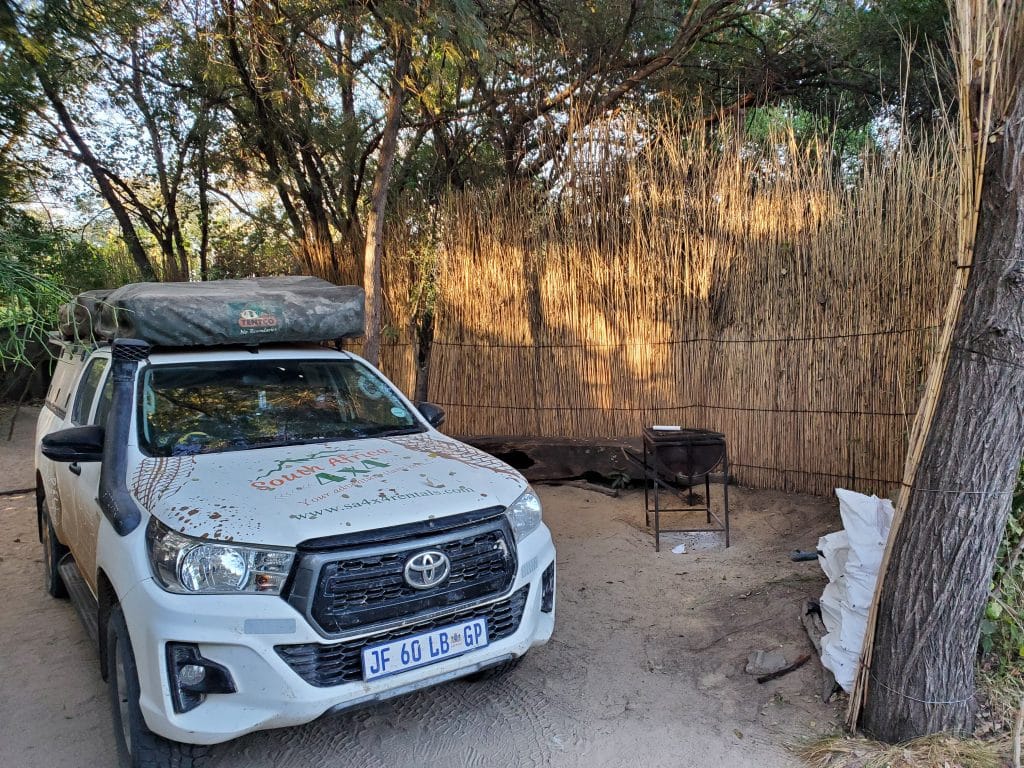
Tall straw stalks marked the boundaries of individual campsites at Caprivi Houseboat Safari Lodge, creating privacy. The sites were basic and equipped with a fire pit, power, and a wash sink. The camp provided firewood, and communal ablution facilities with hot water on demand were available. Wi-Fi was available at reception and reached the site.
Next Up on our 51-Day Adventure….
Part 3: Victoria Falls & Botswana
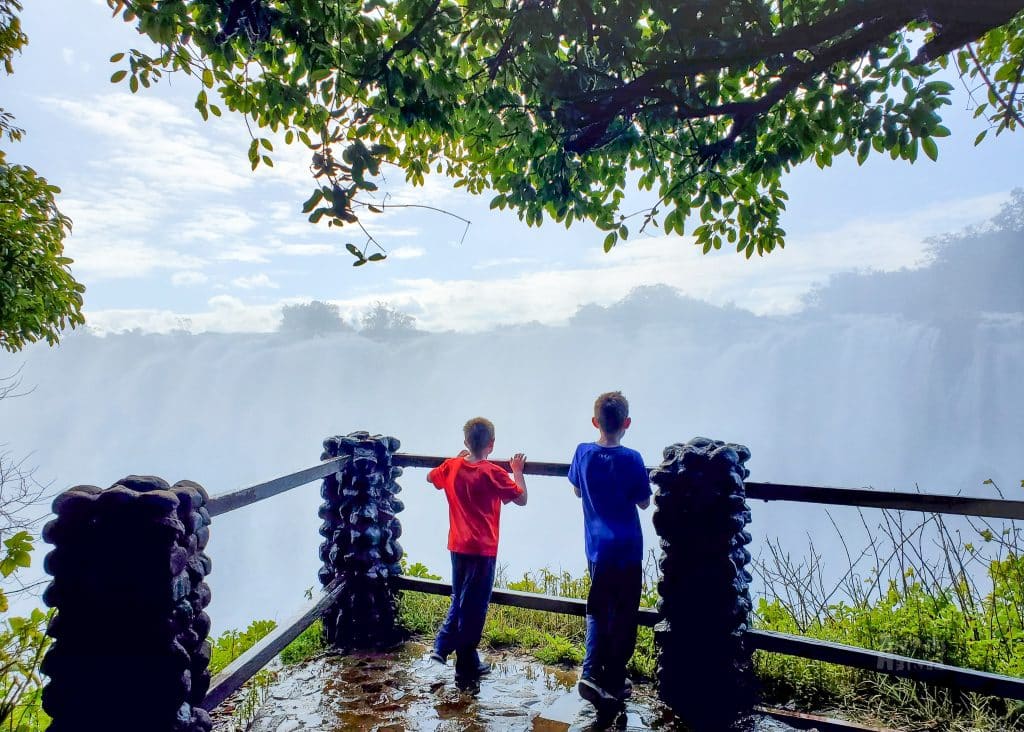
Ready to Create Your Own Wild Adventure?
Whether you’re a seasoned traveler or looking for a new adventure, a safari is the perfect way to connect with nature and create memories that will stay with you forever.
- Camping Safari in Africa: Know Before You Go
- Camping Across Southern Africa: A Rundown of our Safari Campsites
- Navigating Border Crossings in Southern Africa
- Safari with Kids: Tips from the Road
- Etosha NP with Kids: A Family Safari to Remember
- Exploring the Caprivi Strip with Kids
- Okonjima Family Safari: Where the Wild Things Wait
- The Smoke that Thunders: A Trip to Victoria Falls
- Into the Wild: Chobe NP with Kids
- Sunset Cruise on the Chobe River: A Photo Journey
- Living Giants: A Photo Journey Through Nxai Pan National Park
- Our Best and Worst Day on Safari
